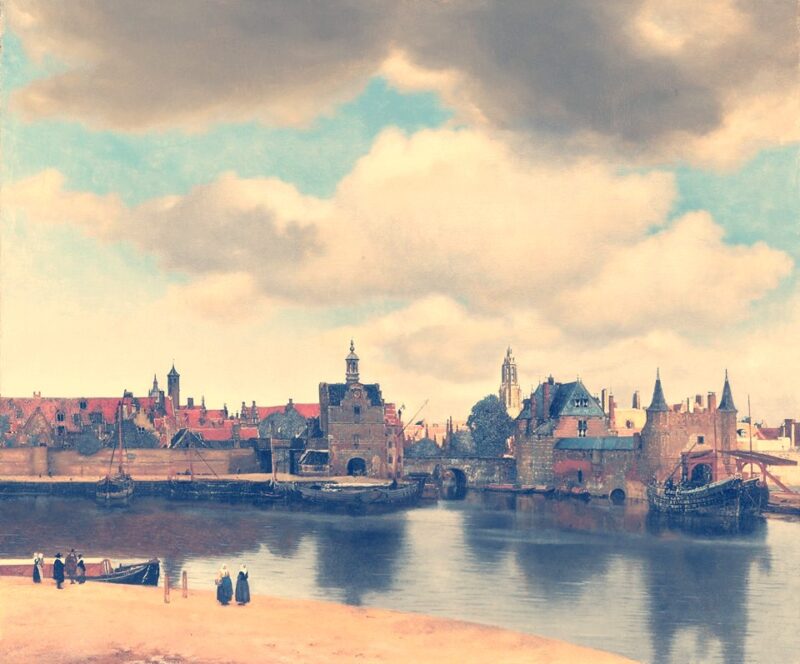“At last he came to the Vermeer, […]
he remarked for the first time on some small figures in blue, that the ground was pink, and finally the precious substance of the tiny patch of yellow wall. His giddiness increased; he fixed his eyes, like a child upon a yellow butterfly which it is trying to catch, upon the precious little patch of wall.”
Marcel Proust, In Search of Lost Time – The Captive
It is said that, one morning, before the Art Institute of Chicago opened its doors, a security guard was on his rounds in Gallery 293, when suddenly, he came upon…
an infestation of butterflies!
On a giant canvas, more than two meters high and nearly three meters long, were attached dozens, hundreds of fluttering blue, white, brown, speckled wings. The butterflies covered the surface almost entirely.
A yellow painting. Untitled. All of Mark Rothko’s are. A signature, and a date. It depicts… nothing much: two rectangles float within the unframed boundaries. But, on closer inspection, the canvas is,
a gate. A doorway into a “monumental expanse of form and tone.” Colour; countless thin washes of pigment, countless hues of yellow, orange, in countless variations, swirling, merging, transforming, expanding, radiating, almost like heat, or music, from the fabric.
Hope, it sings. Rothko described his art as the “elimination of all obstacles between the painter and the idea, between the idea and the observer.” The idea is light. Pure light. The painting, a colour poem. An emotion captured, in 1954, in a tiny patch of yellow.
Is that what drew the butterflies? Were there ever butterflies? It does not matter. The painting still draws hundreds, thousands of people, sixty-seven years later. People stand still, in time and place, in Gallery 293. Some people cry. Some pray. Proust writes about a tiny patch of yellow wall more sublime than all he has lived:
“there is no reason inherent in the conditions of life on this earth that can make us consider ourselves obliged to do good, to be kind and thoughtful, even to be polite,”
There is no reason for artists to paint, birds to sing, poets to write. No reason for beauty but itself, no reward. Yet, poets write. Yet, Vermeer worked for years on a patch of yellow wall. “He took a turbulent reality, and made it look like Heaven on earth.”
“It is the artist’s business to create sunshine when the sun fails.” To know the struggles all human beings face – tragedy, ecstasy, love, fear, loneliness, grey – universally, daily. To understand, and say so. To see the world as it is, for what it is, and how it is, and then,
cast a little light, add a little paint.
Imagine it kinder, warmer. A little patch of yellow wall. A Girl in a Yellow Dress dancing in a jazz club. A room in which, through closed shutters, a ray of sun slips in “on its golden wings, remaining motionless, between glass and woodwork, in a corner, like a butterfly poised upon a flower.”
To colour that reality with “something as comforting as music… to paint men and women with that something of the eternal.” Van Gogh made sunflowers, wheat fields, starry starry nights, cafés, glow, vibrate with yellow. Matisse transformed a woman with a black hat into a rainbow.
In art, the sublime is that which triggers the strongest emotion the mind can feel. Infinite lightness, perhaps. Butterflies on a yellow painting.
Image: Johannes Vermeer, View of Delft, c.1660-61
